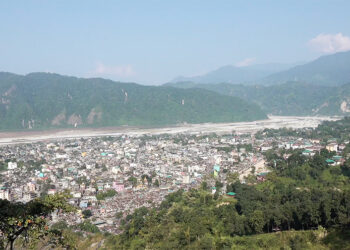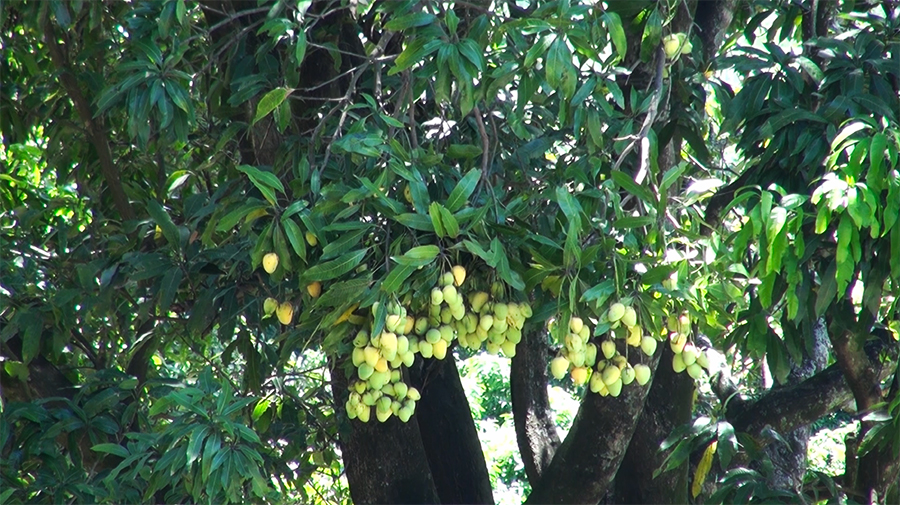 The farmers of Rollong in Monggar’s Narang Gewog grow a range of crops, but it is the local mango that remains their main source of cash income. On average, farmers earn about Nu 50,000 a year from mangoes. Around 25 households in the village collectively produce nearly 13 metric tonnes of local mango annually.
The farmers of Rollong in Monggar’s Narang Gewog grow a range of crops, but it is the local mango that remains their main source of cash income. On average, farmers earn about Nu 50,000 a year from mangoes. Around 25 households in the village collectively produce nearly 13 metric tonnes of local mango annually.
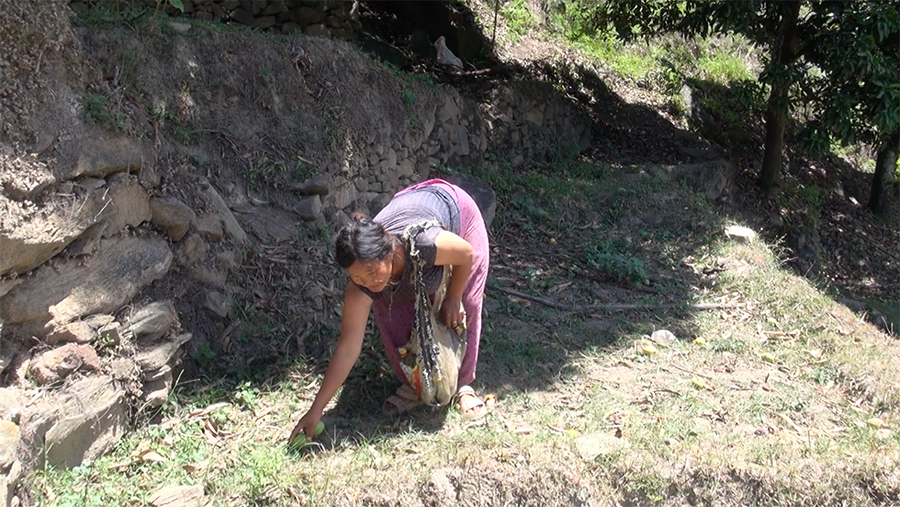 27-year-old Pema Dechen from Pangkhang village is busy harvesting mangoes. These trees were planted by her parents years ago.
27-year-old Pema Dechen from Pangkhang village is busy harvesting mangoes. These trees were planted by her parents years ago.
Her husband helps her carefully pluck the ripe fruits. Together, they sell mangoes at Rollong along the Trashigang – Monggar highway.
Some farmers even travel as far as Trashigang and Trashi Yangtse to sell their surplus harvest.
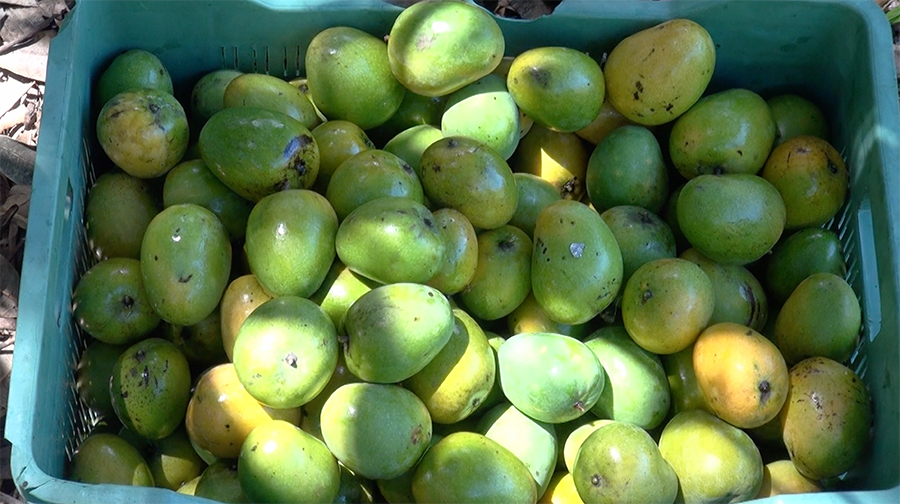 A kilogramme of local mango sells for Nu 70 to 100.
A kilogramme of local mango sells for Nu 70 to 100.
Like Pema, many families rely on mango as their primary cash crop. While earnings vary, most say their incomes are gradually increasing.
“The money I earn from mangoes is enough for my children’s expenses and our daily needs. Birds and insects damage some mangoes but not much else. Last year I made about 20,000 ngultrum, but this year I expect around 50,000 from mangoes.”
To ensure continued income in the future, farmers have also planted new mango saplings through the Million Fruit Tree Plantation Project.
In addition to mangoes, farmers grow various vegetables to supplement their earnings.
Last year, farmers received a new farm shed with toilet facilities to help them sell their produce more comfortably.
Tashi Zangmo, a farmer said, “It’s mango season now. Many of us make Nu 60,000 to 70,000 from selling mangoes. My trees are still young and just starting to bear fruit. Other days we sell beans and maize, and with that money we buy salt, oil, and other essentials.”
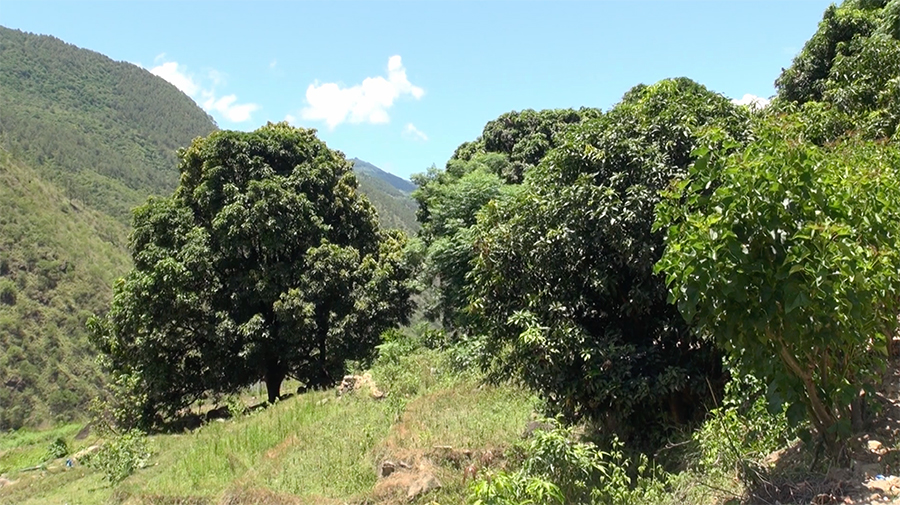 Mangoes are also cultivated in other parts of Monggar. According to the recently launched Integrated Agriculture and Livestock Census of Bhutan 2025, the district produced over 87 of the country’s 704 metric tonnes of mango last year, ranking just behind Pema Gatshel and Dagana.
Mangoes are also cultivated in other parts of Monggar. According to the recently launched Integrated Agriculture and Livestock Census of Bhutan 2025, the district produced over 87 of the country’s 704 metric tonnes of mango last year, ranking just behind Pema Gatshel and Dagana.
Sonam Darjay/Namgay Wangchuk
Edited by Kipchu







